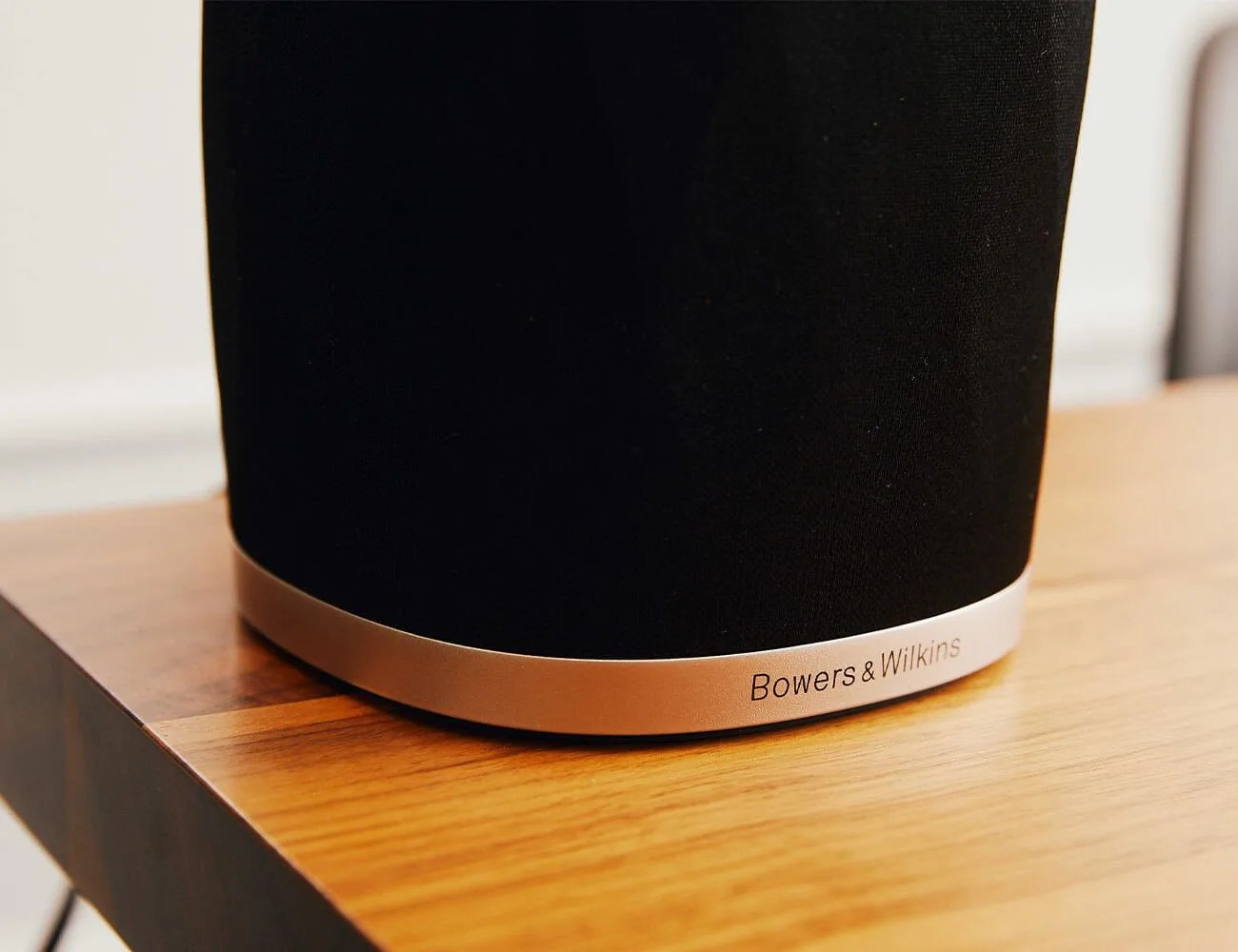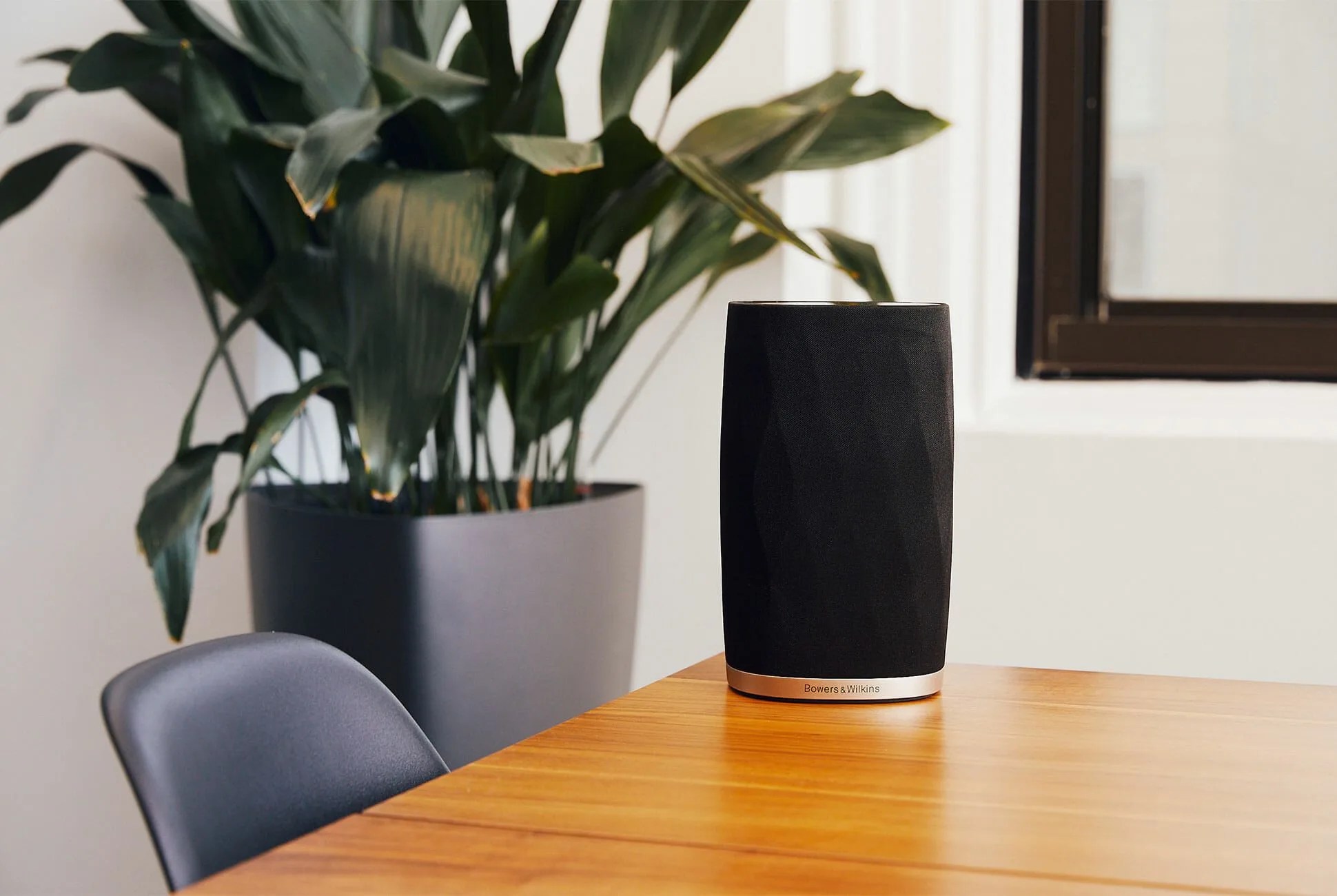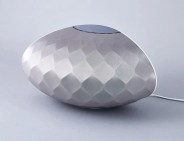Earlier this year, Bowers & Wilkins released its super high-line of wireless multiroom speakers, named “Formation,” and the big thing with them, other than being beautiful and well designed, was that they were able to stream higher quality audio than pretty much all its competitors (namely Sonos, Bose and Apple’s HomePod). They work like most Wi-Fi speakers, as you can still stream music via Spotify Connect or AirPlay, but the speakers actually establish their own proprietary wireless mesh network between themselves and can thus stream up to 96/24-bit audio. Of its Formation speakers, I’ve reviewed the Wedge, a 120-degree wedge-shaped all-in-one speaker that also happened to be the smallest and cheapest Formation speaker you could buy.
Since then, Bowers & Wilkins has added an even smaller and more affordable wireless speaker to its Formation line. The all-new Flex is a cylindrical front-firing speaker with a woven grille. It gets its “flex” name because it’s versatile, able to be designated as a right or left channel alongside another Flex speaker, or two can work as rear-channel speakers with a Formation Bar (B&W’s soundbar) in a home theater system. The B&W Formation Flex costs $450.
The Good: The Formation Flex is certainly one of the best-sounding “compact” speakers you can buy right now. In the press release announcing the speaker, B&W claimed that the Flex was “the highest quality sound ever found in a standalone wireless speaker of its size,” and to be honest, I can’t really say much to refute that. It has a decoupled double-dome tweeter (that uses the same technology found in the company’s higher-end 600 series speakers) and a 4-inch woven glass fiber cone bass/midrange driver, both of which have their own dedicated amp and DSP. All this ends up meaning that the Flex delivers a rich and accurate audio experience (which is what B&W speakers are known for), one that sounds best when played at medium to high volumes.
B&W has really nailed down the setup process with its Formation line. In regards to the Flex, specifically, the setup process is almost identically to the latest Sonos speaker (the Move); you just download the app, connect the speaker to Wi-Fi and then – bam – you’re finished. There’s no self-tuning process because, like Apple’s HomePod or the Sonos Move, the Flex has a kind-of dynamic equalizing software, meaning the speaker can autotune itself in realtime for the room it’s in.

If you’ve bought into B&W’s ecosystem, meaning you’ve invested in other Formation speakers, you can do some pretty neat things with the Flex. Although I wasn’t able to test this, you’re able to pair Flex speakers together so they play in a stereo tandem, or you can designate two Flex speakers are rear-channel speakers with the B&W’s Formation Bar (soundbar) and have a 5.1 home theater system. You are able to do the same kind of thing with a Sonos system, with two Sonos Ones (or two Sonos One SLs) and any one of Sonos’s soundbars.


